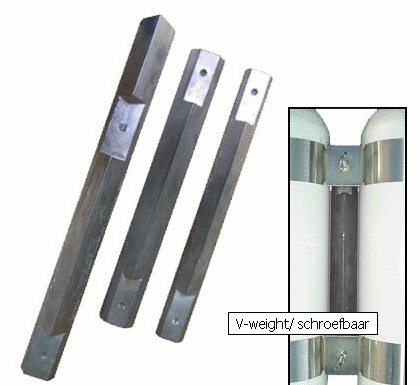I dont get the "you need to be more negative" bit, that's where the issue lies.
With the 130's (assuming you dont change weighting), you *will* be X pounds heavier (assuming nothing else changes) -- you dont need to add more ballast to *get* that more negative -- the extra gas will do that for you.
Only concern is the initial negative buoyancy (for wing) and empty buoyancy of the tanks
Well I'd hoped the post you quoted would have answered your question. When I use the term "negative" I mean exactly that, expressed another way is as you become more negative you will need to inflate you wing more just to stay at the surface at the start of the dive. This is the point I've been trying to communicate in a thread about wing selection. Larger tanks need larger wings because of the great weight of the gas, not the greater weight (potentially) of the tanks themselves.
At the end of the dive, i.e. shallow stop with essentially empty tanks you need to have enough ballast remaining to offset the positive buoyancy of your exposure suit, and in the case of buoyant tanks (al 80's) the buoyancy of your tanks.
This ballast is essentially anything you are carrying that does not float, backplate, regs, bands and manifold, can light empty negative tanks, weight belt etc.
It is prudent to allow for a couple extra lbs beyond what is required to offset your exposure suit in shrink wrapped condition. Why? the day you need ALL of your back gas is not the day you want to be shivering in a shrink wrapped suit during an extended shallow stop, the extra 2-3 lbs allows for inflation of your suit a bit.
As long as your exposure suit does not change, then this minimum ballast requirement does not change even if you change tanks. If the tanks are of similar buoyancy empty, then you need not alter anything, if the empty weights vary then some adjustment needs to be made to your weight belt typically.
What does change is how negative you will be at the start of the dive, more volume of gas means you will be more negative.
It is this effect, i.e. higher volume tanks = more negative at the start of the dive that will require a larger wing. This thread was originally about wing selection for two different volume tanks.
Keep in mind that this assumes no change in exposure suit, and that's often not the case when moving to larger tanks.
The diver who is currently diving a single modest sized tank, and is contemplating moving to a large single, or even doubles often thinks that they will add a big steel tank and take off their weight belt. What they often find is the longer / deeper exposures possible with large tanks require more buoyant exposure suits, and they will need both the big steel tank(s) and more ballast.
Limeyx do you use the same undies for a nitrox dive with 100's vs a 21/35 dive that requires your 130's?
Tobin






